Surprising Campus Sights from Duke's Past
Duke’s campus may seem timeless, but the years have left plenty of landscape changes
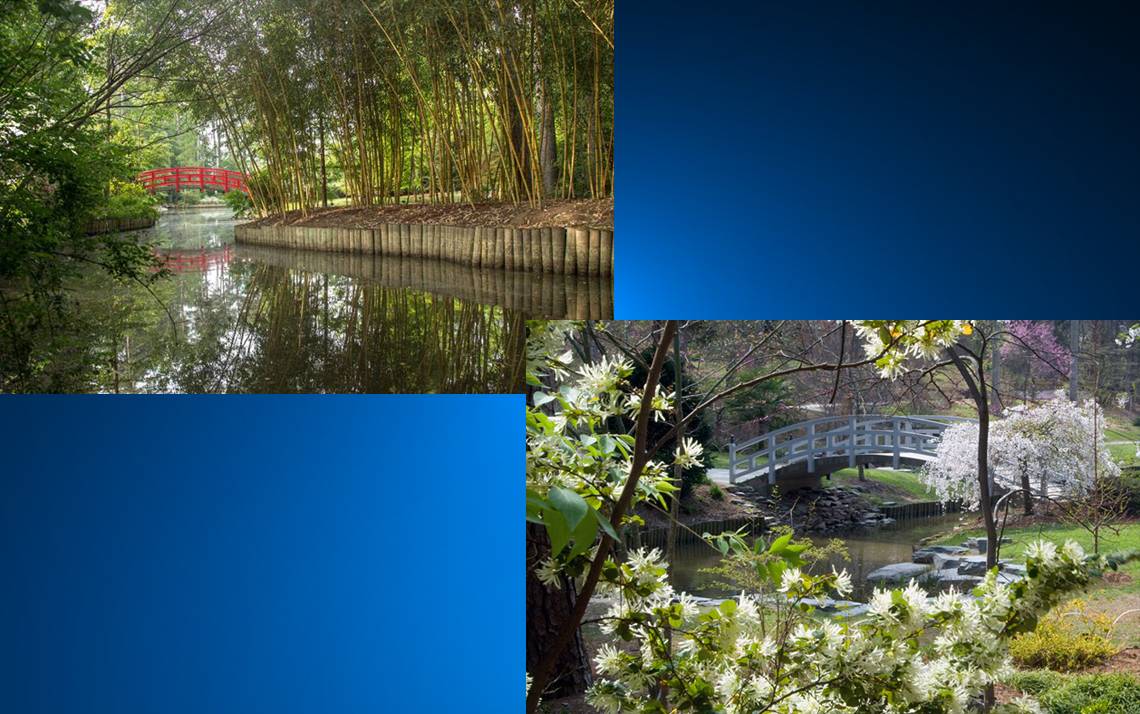
Whether it’s the setting for bridal pictures or the subject of a carefully composed shot destined for Instagram, the red arched bridge in Culberson Asiatic Arboretum is one of the most-photographed spots in Sarah P. Duke Gardens.
The bridge provides a pop of color that shakes up lush green surroundings and can be artfully seen in the reflection in the water below.
“It stands out from a distance, it attracts you to it, it’s like a magnet,” said Paul Jones, the curator of the Culberson Asiatic Arboretum.
But if you look at a photo of the bridge a decade ago, you might be surprised to see its vibrant red replaced with pale gray.
With its familiar gothic spires and worn stone, Duke’s campus can seem timeless. But images of Duke’s past reveal subtle, though slightly surprising, changes that show how campus is continually evolving.
Check out historical images that might have you looking at Duke’s campus in a different light.
There was once a racetrack on East Campus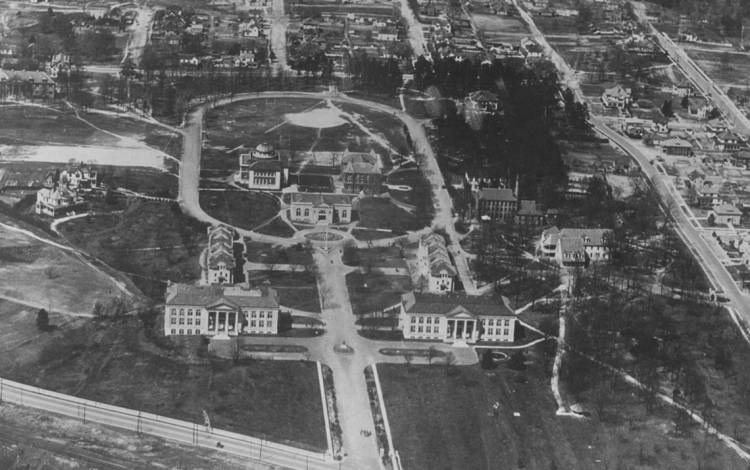
When Trinity College moved from Randolph County to Durham in 1892, it took over a piece of land that was known locally as Blackwell Park and served as Durham County’s fairground. The tract, which is now East Campus, was relatively open and flat but had one feature that endured as the new college took root.
Circling the property was a racetrack for horses. As the college grew around it, the track was incorporated into the campus.
After Trinity College became Duke University in the mid-1920s, East Campus underwent a radical transformation, going from an organic arrangement of buildings to the symmetrical layout of Georgian brick structures seen today. In the process, the racetrack was erased. Baldwin Auditorium now stands where one end of the track once curved.
“It reminds us that the ground we walk on today has seen many generations and that there’s always something new to learn about the places we feel familiar with,” said Duke University Archivist Valerie Gillispie.
Science Drive used to keep going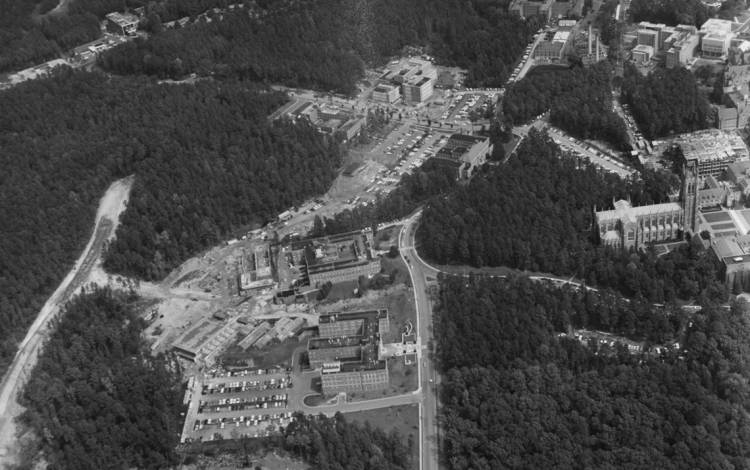
The original vision of West Campus was to have neo-gothic buildings set in a series of orderly quadrangles surrounded by forest. Initially, the tree-lined Science Drive represented the northern boundary of campus, connecting Cameron Boulevard and Research Drive.
As campus expanded and new buildings sprouted up along Science Drive in the latter half of the 20th century, it became a main thoroughfare.
But in 2004, the construction of Fitzpatrick Center for Interdisciplinary Engineering, Medicine & Applied Sciences, and Duke’s push to make a more pedestrian-friendly campus, led to the shortening of Science Drive, which now ends in a cul-de-sac behind Duke University Chapel.
The Bryan Center didn’t always have a plaza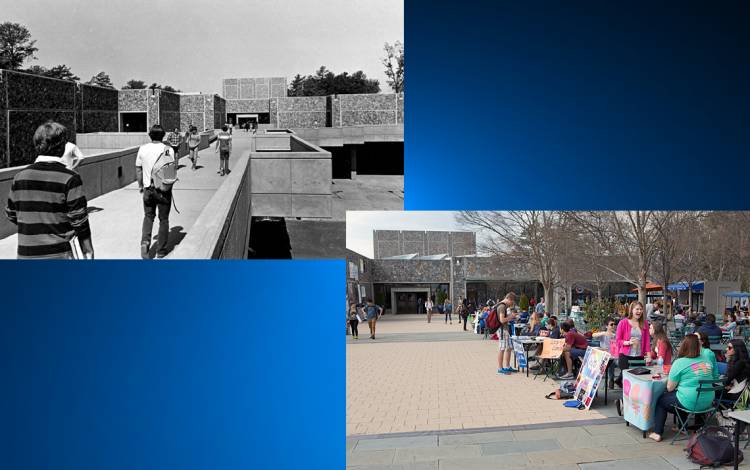
On most days during the academic year, few outdoor spaces on campus are as alive as West Campus Plaza, which sits in front of the Bryan Center. It’s where students gather for lunch, grab a quiet spot to study or set up tables to spread the message of their organizations.
But for the first two decades of its existence, the Bryan Center had no adjoining plaza.
Opened in 1982, the Bryan Center was a hub of student life. But set apart from the historic core of West Campus, it was accessible via a narrow elevated walkway. In 2006, the walkway was replaced by the plaza, a one-acre open space that features trees and seating areas and quickly became the popular gathering spot it is today.
The not-always-red bridge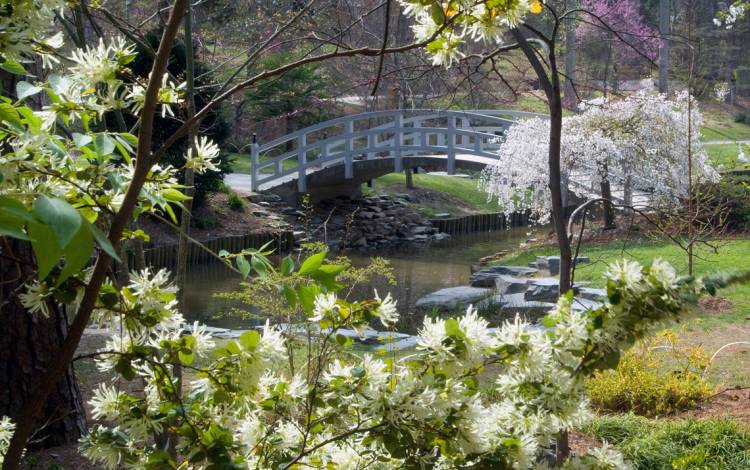
The wooden bridge at Sarah P. Duke Gardens was built in 1991 and, after much discussion, the decision was made to use a stain on the structure to allow the wood to appear aged. But after a series of stains were applied, it never quite looked right. Over time, the bridge took on a soft white color.
In the early 2000s, during the planning for the Durham-Toyama Sister Cities Pavilion and Garden, a landscape designer from Japan visited the garden.
“On our initial walk into the arboretum, along the edge of the pond, his first comment about that bridge was something akin to ‘Why isn’t that red?’” said Jones, the curator of the Culberson Asiatic Arboretum.
The designer explained that in Japan, bridges like the one at Duke Gardens were often red. After doing a little more research, Jones decided to go ahead with the color change, which took place in the summer of 2010. Since then, the bridge has become a favorite spot for visitors.
“There was a buzz when we painted it red because it was a dramatic change,” Jones said. “Describing the bridge as ‘iconic’ when it was white may be overstating it a bit, but it was well-known and well thought of. Now, clad in red, it’s unquestionably a Gardens’ icon.”
Got a story idea or news to share? Share it with Working@Duke.